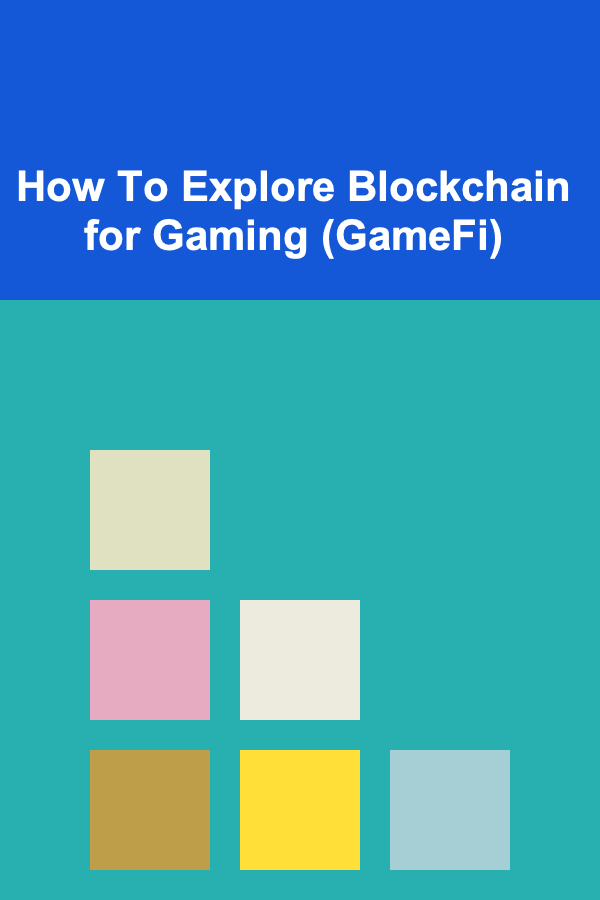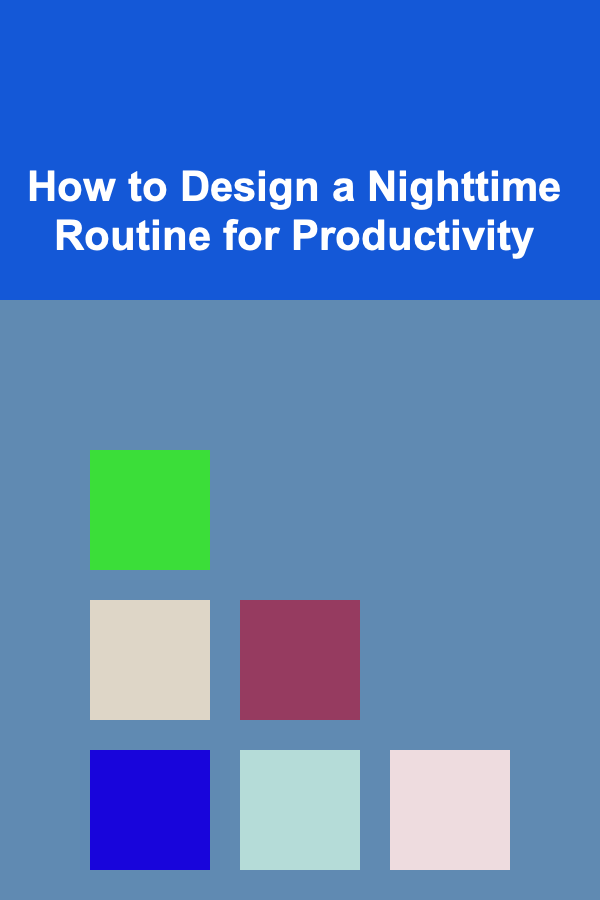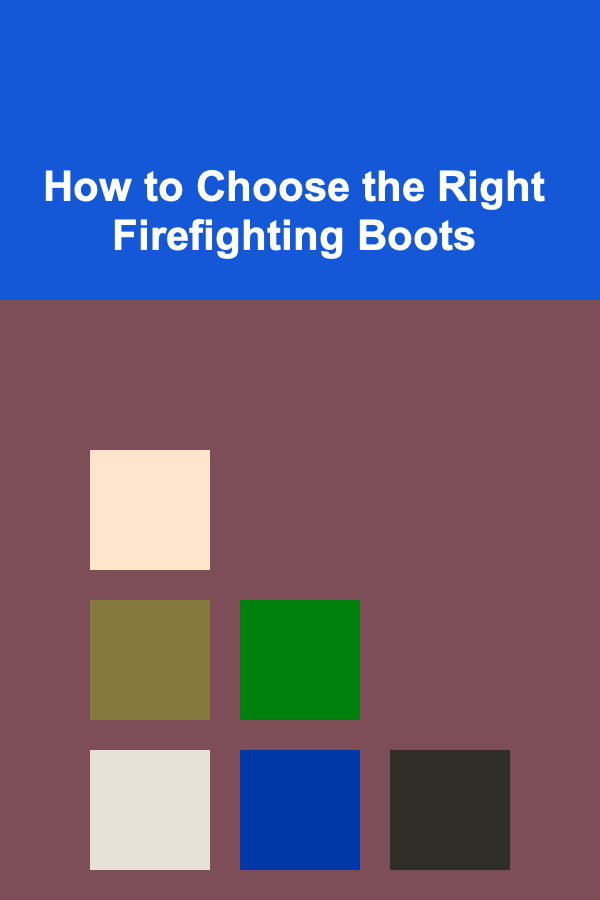
How To Explore Blockchain for Gaming (GameFi)
ebook include PDF & Audio bundle (Micro Guide)
$12.99$10.99
Limited Time Offer! Order within the next:

Blockchain technology has made a significant impact across multiple industries, including finance, healthcare, and logistics. One of the most exciting applications of blockchain, however, is in the gaming industry. The convergence of blockchain technology and gaming has given rise to a new movement known as GameFi, short for "gaming finance." GameFi combines gaming with decentralized finance (DeFi) and non-fungible tokens (NFTs), creating an ecosystem where players can engage with virtual economies and even earn real-world value from their gaming experiences.
In this article, we will explore how to explore and engage with blockchain for gaming, detailing the basics of GameFi, its ecosystem, opportunities, and challenges. We will look into the mechanics behind blockchain-powered games, examine the role of NFTs and cryptocurrencies, and discuss how developers and players can participate in and benefit from GameFi.
Understanding Blockchain and GameFi
Blockchain Basics
Blockchain is a distributed ledger technology that allows data to be stored across a decentralized network. It is best known as the backbone of cryptocurrencies like Bitcoin and Ethereum. The key characteristic of a blockchain is its immutability: once data is added to a blockchain, it cannot be altered or deleted without consensus from the network. This transparency, security, and decentralization are why blockchain technology is increasingly used in a variety of applications, including gaming.
A blockchain consists of a series of "blocks," each containing a record of transactions. These blocks are linked together chronologically, creating a chain. Because each block is cryptographically secured, once data is added, it cannot be tampered with, ensuring trust in the network.
What Is GameFi?
GameFi refers to the fusion of gaming and finance, leveraging blockchain technology to create decentralized virtual economies. In a GameFi ecosystem, players are rewarded for their in-game activities, such as earning cryptocurrencies, NFTs, and other valuable digital assets. This decentralized gaming model has shifted the paradigm of traditional gaming, where players merely "consume" content without owning any real-world value.
The core components of GameFi include:
- Play-to-Earn (P2E): In this model, players can earn rewards, such as tokens and NFTs, based on their in-game activities. These rewards can be traded or used within the game ecosystem.
- Non-Fungible Tokens (NFTs): NFTs are unique digital assets that can represent in-game items, characters, skins, or even real estate. Unlike cryptocurrencies, each NFT has distinct properties and cannot be exchanged on a one-to-one basis.
- Cryptocurrencies: Digital currencies are often used in GameFi to facilitate transactions between players or as rewards for certain achievements.
- Decentralized Finance (DeFi): DeFi elements in GameFi allow players to stake, lend, or borrow assets from the game's ecosystem or other players, creating more opportunities for players to earn or generate wealth.
The Blockchain Infrastructure Behind GameFi
To understand how to explore blockchain for gaming, it's essential to first examine the infrastructure that enables GameFi. Several layers of technology combine to create a seamless and engaging experience for players.
Smart Contracts
Smart contracts are self-executing contracts with the terms of the agreement directly written into lines of code. These contracts run on blockchain networks and automatically execute transactions when specific conditions are met. In GameFi, smart contracts are used to facilitate asset exchanges, ensure fairness, and enforce the rules of the game.
For example, in a GameFi environment, smart contracts can be used to:
- Reward players with tokens when they complete certain tasks or missions.
- Enable players to trade or sell in-game items through decentralized marketplaces.
- Manage staking pools, where players can earn passive income by providing liquidity or assets to the game's ecosystem.
Smart contracts eliminate the need for intermediaries, reducing the cost and complexity of transactions, and ensuring transparency and fairness.
Blockchain Networks and Protocols
The blockchain network chosen for GameFi development plays a significant role in determining the scalability, speed, and cost of the game. While Ethereum is the most widely used blockchain for NFTs and GameFi, it faces issues such as high transaction fees and slow transaction speeds due to its proof-of-work consensus mechanism. As a result, several other blockchain networks have gained traction in the GameFi space, including:
- Binance Smart Chain (BSC): Known for its low fees and fast transaction speeds, BSC is a popular choice for many GameFi projects.
- Polygon: A layer-2 scaling solution for Ethereum, Polygon allows developers to build scalable and cost-effective decentralized applications (dApps).
- Solana: Solana offers high-speed and low-cost transactions, making it an attractive option for gaming projects.
- Avalanche: Avalanche's consensus mechanism offers high throughput and low latency, enabling smooth gaming experiences.
These blockchain networks allow developers to build and deploy games that can handle large numbers of transactions and interactions, which are common in multiplayer and large-scale online games.
Exploring Blockchain Games
Key Features of Blockchain Games
Blockchain games leverage the power of decentralized networks to provide unique experiences that traditional games cannot. Some of the key features of blockchain games include:
Ownership of Digital Assets
In traditional games, players can purchase in-game items such as skins, weapons, or characters, but they do not truly own them. These items exist within the game's ecosystem and cannot be traded or sold outside of the game. Blockchain games, on the other hand, allow players to truly own their in-game assets through NFTs. Players can buy, sell, or trade their items on external marketplaces, giving them real-world value.
Play-to-Earn Model
The Play-to-Earn (P2E) model has become a cornerstone of GameFi, where players can earn cryptocurrency or NFTs for their time spent playing. Unlike traditional games that reward players with in-game currency or virtual goods, GameFi games allow players to monetize their efforts. For example, players might receive a token that can be traded on exchanges or use NFTs as collateral in a DeFi protocol.
Transparency and Fairness
Blockchain's transparency ensures that the game's economy and mechanics are visible to all players. Players can verify the rarity of NFTs, track the history of transactions, and ensure that the rewards they receive are fair and unbiased.
Interoperability
Some blockchain games enable interoperability, where players can move their assets across different games. For example, an item acquired in one game might be used or sold in another game, offering greater flexibility and value to players. This is in contrast to traditional games, where assets are locked within the confines of a single game.
Popular Blockchain Games
Several blockchain games have gained significant attention and traction in recent years. These games exemplify how GameFi is changing the gaming landscape:
- Axie Infinity: One of the most well-known P2E games, Axie Infinity allows players to collect, breed, and battle digital creatures called Axies. Players earn Smooth Love Potion (SLP) tokens and can sell their Axies or trade them for profit.
- Decentraland: A virtual world where players can buy, sell, and trade parcels of virtual land as NFTs. Players can also create and monetize their own content, from games to interactive experiences.
- The Sandbox: Similar to Decentraland, The Sandbox is a virtual metaverse where players can build and own virtual land and assets. Players can also create and share their own games and experiences.
- Illuvium: A fantasy RPG and collectible creature-battling game set in an open world. Players can explore the world, capture Illuvials (creatures), and battle other players for rewards.
How Developers Can Explore Blockchain for Gaming
For developers interested in exploring blockchain for gaming, there are several steps to take in building a blockchain-based game. Here are some guidelines:
Choose the Right Blockchain Platform
The choice of blockchain platform is critical for the performance and scalability of the game. Developers need to consider factors such as:
- Transaction speed: How quickly can the blockchain handle in-game transactions?
- Transaction fees: What are the costs associated with minting NFTs, trading tokens, and performing other operations on the blockchain?
- Smart contract functionality: Does the platform support the use of smart contracts for managing game logic?
Design the Game Economy
Designing a sustainable and balanced in-game economy is essential for a successful GameFi project. This includes deciding on the types of assets (NFTs, tokens, etc.) and how they will be used within the game. Developers should also plan for tokenomics, which governs how tokens are distributed, how players can earn rewards, and how inflation or deflation of tokens will be managed.
Build a Community
Building a strong community around a blockchain game is essential for its success. Community members are not only players but also investors, content creators, and promoters. Developers should engage their community through social media, forums, and live events to build excitement and momentum.
Integrate DeFi Elements
To enhance the gaming experience, developers can integrate decentralized finance elements into their games. This might include allowing players to stake tokens, participate in yield farming, or use NFTs as collateral for loans. These features provide more avenues for players to engage with the game's economy beyond traditional gameplay.
Challenges and Opportunities
Challenges
- Regulation: As blockchain technology becomes more mainstream, governments may impose regulations on the use of cryptocurrencies and NFTs in gaming. Developers need to stay informed about legal requirements and compliance issues.
- Scalability: Blockchain games can face challenges when handling large volumes of players and transactions. Solutions like layer-2 scaling and sidechains are helping to mitigate these issues.
- Security: While blockchain is generally secure, smart contracts and decentralized applications are vulnerable to bugs and exploits. Developers must conduct thorough testing and audits to ensure the security of their games.
Opportunities
- New Business Models: GameFi opens up new revenue streams for developers, including in-game purchases, NFT sales, and token rewards. This decentralized model empowers creators and players alike.
- Global Player Base: Blockchain games can attract players from all over the world, as they provide opportunities for cross-border transactions and collaborations.
- Ownership and Economy: GameFi introduces a new paradigm where players can own and trade in-game assets, making gaming more rewarding and inclusive.
Conclusion
Blockchain technology has the potential to revolutionize the gaming industry, ushering in a new era of decentralized gaming economies. GameFi offers players the ability to earn real-world value from their in-game actions, while developers can create more engaging, fair, and rewarding game experiences. By leveraging blockchain, NFTs, and DeFi, the gaming industry can evolve into a more inclusive and dynamic space.
As the GameFi ecosystem continues to grow, both developers and players have the opportunity to shape its future. Exploring blockchain for gaming is not just a trend; it's the beginning of a new paradigm in the way games are developed, played, and monetized.
Reading More From Our Other Websites
- [Skydiving Tip 101] Thrills You'll Experience on Your First Fun Skyjump
- [Personal Care Tips 101] How to Apply Sunscreen to Prevent Skin Cancer
- [Personal Financial Planning 101] How to Use Automated Investing Tools: A Comparison of Robo-Advisors and Best Online Brokers
- [Home Holiday Decoration 101] How to Decorate Your Staircase for the Holidays with Style
- [Personal Financial Planning 101] How to Effectively Build an Emergency Fund While Paying Off Debt
- [Home Party Planning 101] How to Plan the Ultimate Game Night Party at Home
- [Organization Tip 101] How to Set Up a Family Calendar for Better Communication
- [Personal Care Tips 101] How to Use Hair Oil to Restore Damaged Hair
- [Home Family Activity 101] How to Create a Family Scrapbook with Memorable Photos
- [Personal Finance Management 101] How to Teach Your Kids About Personal Finance

How to Secure Sliding Glass Doors Against Break-ins
Read More
How to Understand the Role of Patience in Frugal Living
Read More
How to Plan a Wedding Videography Timeline
Read More
How to Plan a Product Launch for SaaS Businesses
Read More
How to Design a Nighttime Routine for Productivity
Read More
How to Choose the Right Firefighting Boots
Read MoreOther Products

How to Secure Sliding Glass Doors Against Break-ins
Read More
How to Understand the Role of Patience in Frugal Living
Read More
How to Plan a Wedding Videography Timeline
Read More
How to Plan a Product Launch for SaaS Businesses
Read More
How to Design a Nighttime Routine for Productivity
Read More